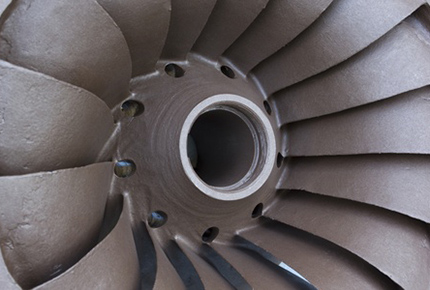Rotor Balancing
Due to modern dynamical vibration measurement techniques and measurement data acquisition, the unbalance of a rotor can be determined accurately. A particular difficulty arises, however, from the fact that the resulting, for the balancing relevant system ofequations is often over-determined, so that no exact solution exists. Further difficulties arise from restrictions on the maximum compensation attachable mass balance for each rotation speed level and tolerance limit restrictions. If one neglects these constraints, then the resulting balancing problem can be mathematically seen as the problem of providing a solution whose infeasibility is minimal in the least-squares sense. However, in practice these restrictions are crucial and must be taken into account. Hence a least-square minimization is not sufficient.
We model the problem as a mixed-integer nonlinear problem, where the nonlinearities have the special structure of being secondorder cone (SOC) constraints. Continuous SOC problems can be solved using interior point techniques. To address the integrality constraints we embedd our SOC solver into a branch-and-bound framework. A further way to handle SOCs is by piecewise linear
approximation, so that standard mixed-integer linear solvers can be applied to obtain numerical solutions.
Partners
- TU Darmstadt
Industrial partner / Funding
- Schenck RoTec GmbH, Darmstadt.
Related publications
- Mirjam Dür, Armin Fügenschuh, Alexander Martin, Stefan Ulbrich, Verfahren und Vorrichtung zum Auswuchten von wellenelastischen Rotoren , German Patent Application, DE 10 2006 060 583.7, 2006.

